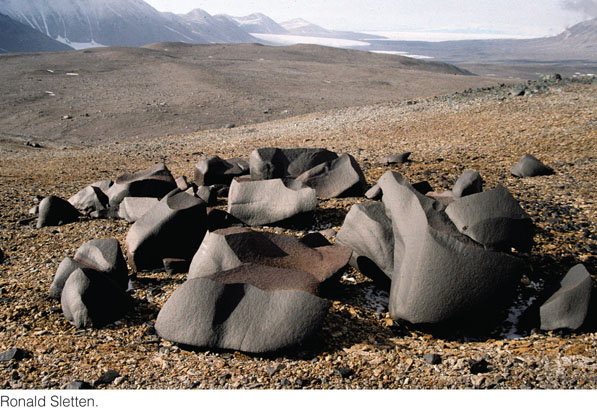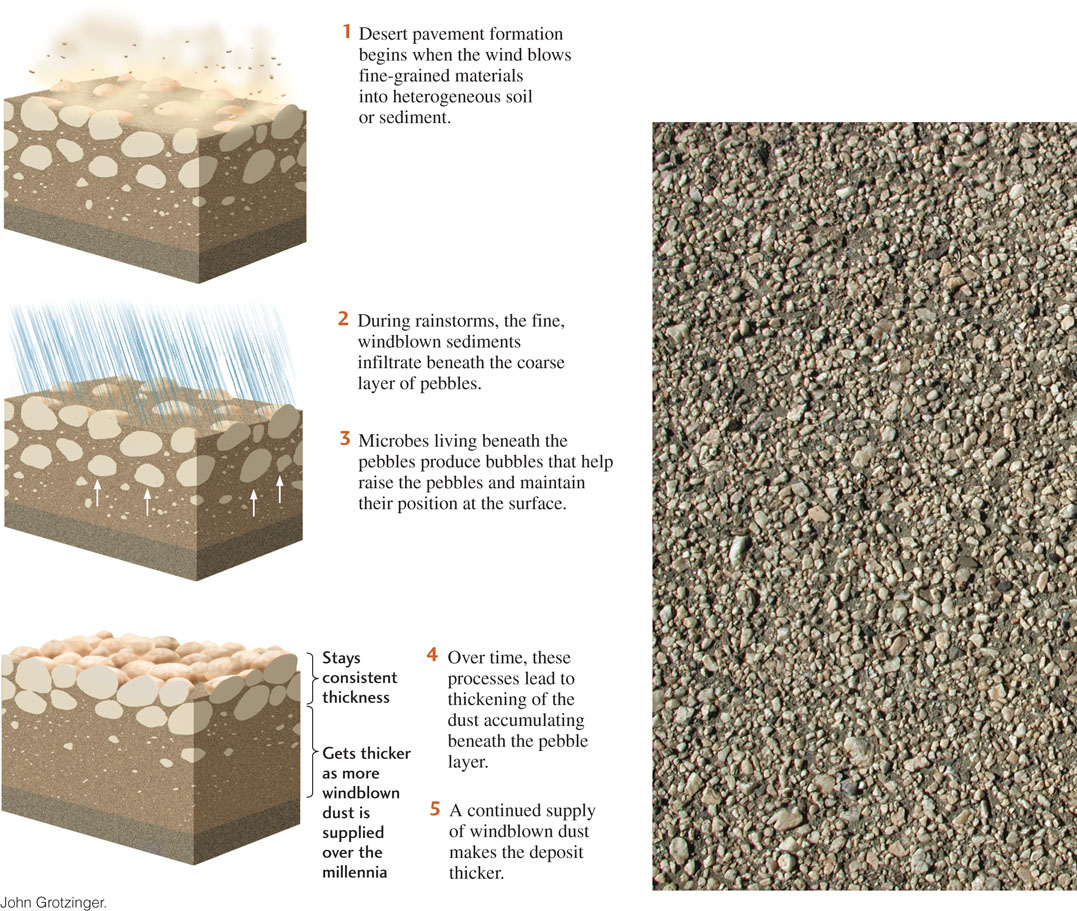Wind as an Agent of Erosion
By itself, wind can do little to erode large masses of solid rock exposed at Earth’s surface. Only when rock is fragmented by chemical and physical weathering can wind pick up the resulting particles. In addition, the particles must be dry, because wet soils and damp fragmented rock are held together by cohesion. Thus, wind erodes most effectively in arid climates, where winds are strong and dry and any moisture quickly evaporates.
Sandblasting
Windblown sand is an effective natural sandblasting agent. The common method of cleaning buildings and monuments with compressed air and sand works on exactly the same principle: the high-speed impact of sand particles wears away the solid surface. Natural sandblasting mainly works close to the ground, where most sand grains are carried. Sandblasting rounds and erodes rock outcrops, boulders, and pebbles and frosts the occasional glass bottle.
Ventifacts are wind-faceted pebbles that have several curved or almost flat surfaces that meet at sharp ridges (Figure 19.5). Each surface or facet is formed by sandblasting of the pebble’s windward side. Occasional storms roll or rotate the pebbles, exposing a new windward side to be sandblasted. Many ventifacts are found in deserts and in glacial gravel deposits, where the necessary combination of gravel, sand, and strong winds is present.

Deflation
As particles of clay, silt, and sand become loose and dry, blowing winds can lift and carry them away, gradually eroding the ground surface in a process called deflation (Figure 19.6). Deflation, which can scoop out shallow depressions or hollows, occurs on dry plains and deserts and on temporarily dry river floodplains and lake beds. Firmly established vegetation—even the sparse vegetation of arid and semiarid regions—retards it. Deflation occurs slowly in areas with plants because their roots bind the soil and their stems and leaves disrupt air flows and shelter the ground surface. Deflation is rapid where the vegetation cover is broken, either naturally by killing drought or artificially by cultivation, construction, or motor vehicle tracks.

When deflation removes the finer-grained particles from a mixture of pebbles, sand, and silt, it produces a remnant surface of pebbles too large for the wind to transport. Over thousands of years, as deflation removes the finer-grained particles, the pebbles accumulate as a layer of desert pavement: a coarse, gravelly ground surface that protects the soil or sediments below from further erosion.
535
This theory of desert pavement formation is not completely accepted because a number of pavements seem not to have formed in this way. A new hypothesis proposes that some of them are formed by the deposition of windblown dust. The coarse pebble pavement stays at the surface, while the windblown dust infiltrates below the surface layer of pebbles, is modified by soil-forming processes, and accumulates there (Figure 19.7).
